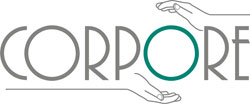A rehabilitative doctor is a specialist in Physical Medicine and Rehabilitation, focused on restoring functionality and improving the quality of life for people facing physical limitations, whether due to injuries, chronic diseases, or neurological sequelae. Their work is not limited to pain relief or treating symptoms, but aims at comprehensive recovery, allowing patients to safely and effectively resume their daily, work, or sports activities.
One of the key features of this specialist is their ability to combine an integral approach with specific, personalized interventions. This includes the use of advanced techniques such as intra-articular or periarticular infiltrations, nerve blocks, and other minimally invasive procedures that offer precise control of pain and inflammation. These techniques are particularly effective in treating chronic musculoskeletal conditions, such as osteoarthritis, tendinopathies, or sports injuries.
Furthermore, the rehabilitative doctor designs and supervises multidisciplinary treatment plans, which may include physical therapy, adaptation of technical aids, and other interventions to maximize the patient’s autonomy and functionality. To ensure an integrated approach, they coordinate with other professionals, such as physiotherapists, occupational therapists, psychologists, or podiatrists, creating a personalized interdisciplinary strategy tailored to each individual’s needs.


